Loma Larga Vineyard prepares to bottle its first Chilean Syrah created from start to finish in 400 liter barrels.
The idea is to create a wine less influenced by new wood – I saw it in the cellars of Miguel Torres in Penedes several years ago – using larger barrels to decrease contact with the wood by increasing volume using 500 liter sherry barrels, instead of the traditional 225 liter bordelaise barrels.
The novelty of the process – something that may very well become a trend – is to carry out all ethanol and malolactic fermentation and aging in the same large 400 liter barrels, allowing the wood to marry the fruit and add complexity and more balance from the get go. The first records describing the fermentation process in 225 liter barrels for this purpose belonged to brothers Charles and Sebastian Villard. They described the process during the presentation of their first wine. At that time they also explained how difficult it was to get the juice and skins in the barrel with both lids on and how experimental and confidential the whole system was to wet the cap. Using this technique the brothers made their Syrah Tanagra 2005, a Casablanca Valley wine with spiced flavors, a dark wine both friendly in tannins and elegant in its potency; if I’m not mistaken they are now producing the second version.
Then, in the midst of the harvest of 2007 I came across the Loma Larga experience, where as of 2006 they were using the large 400 liter barrels. I travelled out to their cellar in Casablanca to see the technique in action for the first time. At that time Emeric Genevière-Montignac, the house oenologist, was posed to introduce the grapes from his best Syrah, recently pressed with their juice in these new French oak recipients, again with both lids on tight. The 2006 had been aged in their first large barrel, the must wine of sufficient color and tannins, but almost all the skins and pips absent. The new task at hand, with the entire must, wasn’t easy, much less so given my presence and a rather indiscreet camera in hand. Finally, with all the wit and genius abundant in South America, the enthusiastic team was able to put together a set piece that made it possible to pass the capricious mass through the barrel’s small opening. The result was so good, that in contrast to the experiment of the previous year, the 2007 Syrah will soon be bottled separately.
Maybe Loma Larga is the first to show results using this new system, but we know the winemaker is far from alone in their endeavors. Viña Casa Silva is also using the same 400-liter barrels supported by their practical pigeage system (to wet the cap) called OXO Wines. The oenologist Mario Geisse uses said technique to get the maximum expression from the vintages of wine made using the interesting experiment of micro-terroirs. That’s where they saw it first and it’s what the Gabler-Riquelme-Tapia trio wanted for the fermentation of their carignan grape from the dry-land terroir they’ve been developing at the vineyard in Angostura since 2007.
This year I went back to Loma Larga right in the middle of the harvest of their best Syrah grapes, and I personally verified the genius applied in 2007 is still working perfectly and has even been improved by getting the marc right to the end of the barrel. I was also lucky enough to try the 2007 version which will be called Rapsodia (*), on the market in limited amounts (at US$160 FOB the crate) before the end of the year.
For now I can say the Rapsodia 2007, still in the barrel – with a small boost blended with malbec and cabernet franc – has the ideal concentration the world would ask of the great Syrah, today positioned at the top of the wines coming out of Loma Larga ($17,000). In addition, the Rapsodia 2007 already has the spice character in the mouth that identifies the best cool climate wines in Chile, and the same vibrant, natural and enviable acids that make it stand out from all the rest. In the nose the wine today still shows the prevailing yet subtle touch of wood as it beats out the spice character of the wine, with hints of mineral of the cool climate Syrah; but the combination of black fruit, exquisite acids and deep violet color are the most prominent features. Little did I notice but at the end of the my visit the tasting had extended to me skipping dessert and downing two cups of wine, with absolutely no regrets, a welcome experiment indeed!
www.lomalarga.com



0 comments
Write a comment